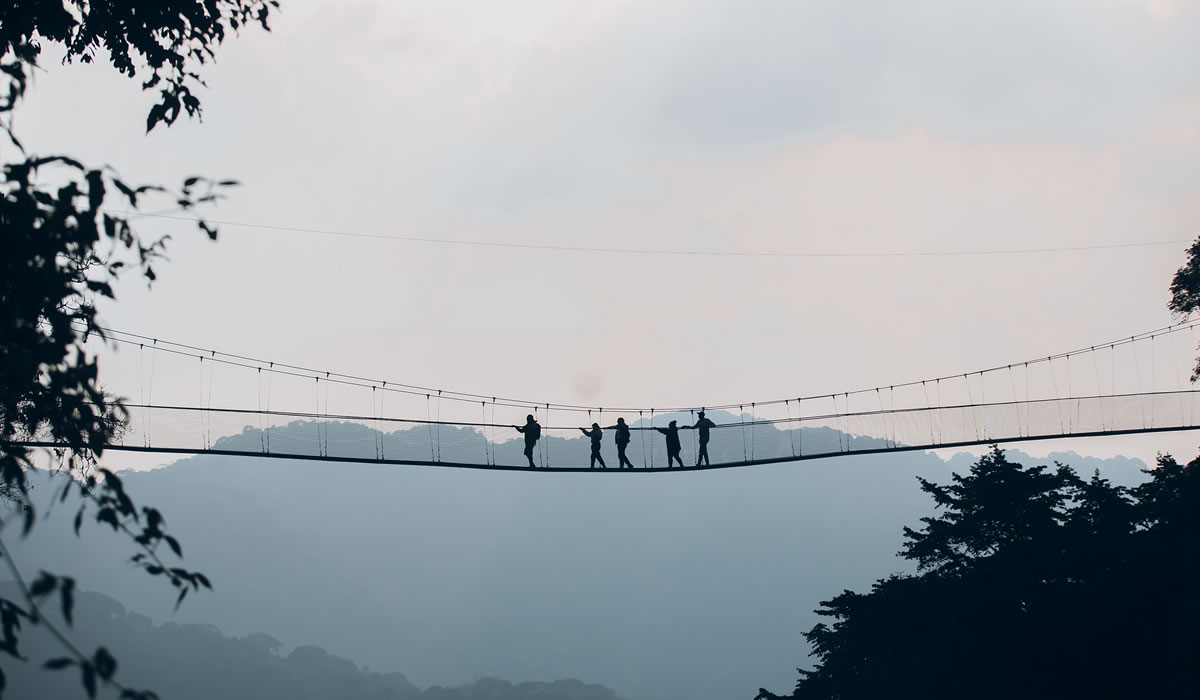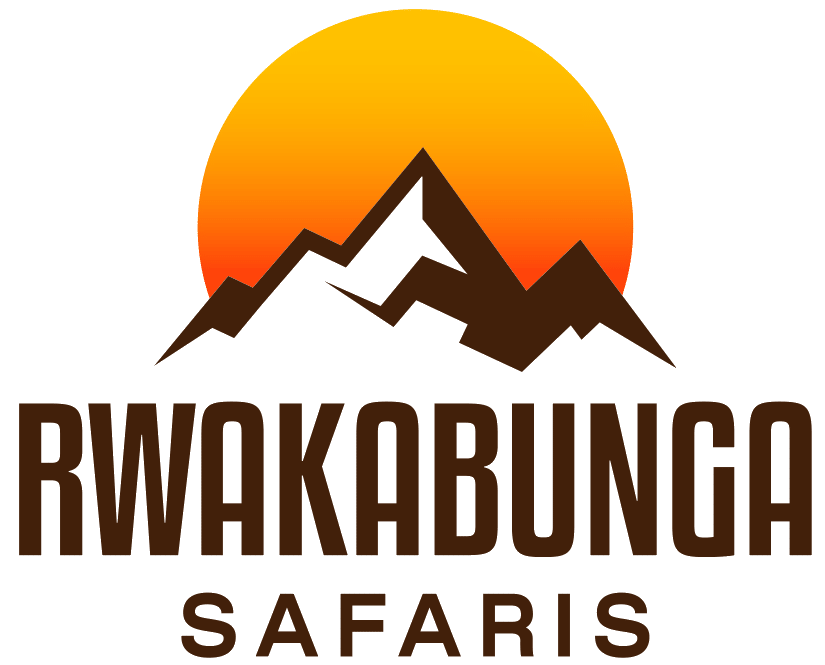Nyungwe Forest National Park stands as one of Africa’s oldest and most biodiverse montane rainforests, offering visitors an unparalleled immersion into pristine wilderness. Located in southwestern Rwanda, this ancient forest spans over 1,000 square kilometers of lush mountainous terrain and harbors an extraordinary wealth of primate species, rare birds, and unique plant life. With its mist-covered canopies, cascading waterfalls, and network of hiking trails including one of East Africa’s most thrilling canopy walkways, Nyungwe presents an essential destination for nature lovers, birdwatchers, and adventure seekers exploring Rwanda’s remarkable natural heritage.

Location and Geographical Features
Nyungwe Forest National Park is situated in southwestern Rwanda, straddling the border with Burundi along the majestic Albertine Rift. The park lies approximately 225 kilometers from Kigali, with the scenic drive taking roughly four to five hours through Rwanda’s picturesque countryside of terraced hillsides and tea plantations. This location places Nyungwe conveniently between Lake Kivu to the west and the capital city to the northeast, making it an ideal component of a comprehensive Rwanda itinerary.
The forest occupies a mountainous region with elevations ranging from 1,600 to 2,950 meters above sea level, creating a variety of microclimates and ecological zones. As one of the largest intact montane rainforests remaining in Africa, Nyungwe serves as a crucial water catchment area, feeding two of the world’s great river systems. The forest’s streams contribute to both the Nile Basin flowing northward and the Congo Basin draining westward, earning Nyungwe recognition as a significant watershed dividing the African continent. This unique hydrological importance, combined with the forest’s ancient origins dating back to the last ice age, makes Nyungwe an irreplaceable ecological treasure.
Primate Tracking and Chimpanzee Trekking
Nyungwe Forest National Park ranks among Africa’s premier primate destinations, protecting 13 different primate species, more than any other forest in East Africa. Chimpanzee tracking represents the park’s flagship wildlife experience, offering visitors the opportunity to observe humanity’s closest relatives in their natural rainforest habitat. Two habituated chimpanzee communities, totaling approximately 60 individuals, are available for tracking experiences that begin early in the morning when these intelligent primates are most active.
Chimpanzee trekking in Nyungwe demands physical fitness and patience, as the apes range widely through the forest in search of fruiting trees and other food sources. Treks can last from two to six hours, navigating steep slopes, muddy trails, and dense vegetation under the forest canopy. The reward comes in those magical moments of watching chimpanzees groom each other, feed on wild fruits, play, and communicate through their complex vocalizations. The forest setting adds to the experience, with shafts of sunlight penetrating the canopy and the constant symphony of forest sounds creating an immersive atmosphere.
Beyond chimpanzees, Nyungwe hosts several other primate species that visitors may encounter during forest excursions. The Ruwenzori colobus monkey, with its distinctive long white tail and cape, lives in large troops that sometimes exceed 300 individuals, the largest groups of arboreal primates in Africa. L’Hoest’s monkeys, with their characteristic white beards, can be spotted along forest trails, while the acrobatic grey-cheeked mangabeys swing through the canopy. Other primate residents include olive baboons, silver monkeys, red-tailed monkeys, and several nocturnal species such as bushbabies and pottos.
Canopy Walkway Experience
One of Nyungwe’s most exhilarating attractions is the canopy walkway, suspended 50 meters above the forest floor and stretching 160 meters through the treetops. As one of only three canopy walkways in East Africa, this engineering marvel offers visitors a bird’s-eye perspective of the rainforest ecosystem, providing opportunities to observe canopy-dwelling wildlife and appreciate the forest’s vertical complexity. The walkway sways gently as visitors traverse it, adding an element of adventure while opening up views across the forest to distant mountains.
Walking among the treetops allows for unique wildlife sightings of birds, butterflies, and primates that rarely descend to ground level. The experience also provides spectacular photography opportunities, particularly during morning hours when mist clings to the valleys and sunlight filters through the canopy. The canopy walk can be combined with various hiking trails, creating half-day or full-day forest experiences that showcase Nyungwe’s diverse ecosystems from multiple perspectives.
Birdwatching Paradise
For birdwatching enthusiasts, Nyungwe Forest National Park represents one of Africa’s most important birding destinations. The park’s bird list exceeds 310 species, including 27 endemic to the Albertine Rift, making it a critical site for endemic bird conservation. The diversity stems from the forest’s age, altitudinal range, and variety of habitats, from bamboo zones to montane forest and swampy clearings.
Notable species that draw birders from around the world include the great blue turaco, with its spectacular blue and yellow plumage, the Rwenzori turaco, red-collared mountain babbler, and the Albertine owlet. Other sought-after species include the handsome francolin, Grauer’s warbler, stripe-breasted tit, and numerous sunbird species that add flashes of iridescent color to the forest undergrowth. The park’s extensive trail network provides access to different altitudes and habitat types, allowing dedicated birders to maximize their species counts during multi-day visits. Dawn and dusk offer the most productive birding sessions, when the forest comes alive with avian activity and vocalizations.
Hiking Trails and Waterfalls
Nyungwe Forest National Park features over 130 kilometers of maintained hiking trails ranging from easy nature walks to challenging full-day treks. These trails provide access to the forest’s diverse ecosystems, scenic viewpoints, and hidden waterfalls. The Igishigishigi Trail, one of the most popular routes, takes hikers through varied terrain including bamboo forests and offers excellent opportunities for primate encounters. The Congo-Nile Divide Trail follows the watershed boundary and presents stunning panoramic views across the forest canopy to Lake Kivu in the distance.
For waterfall enthusiasts, the Isumo Waterfall Trail leads to a beautiful cascade tumbling down moss-covered rocks, creating a serene setting perfect for contemplation and photography. The Kamiranzovu Trail accesses a high-altitude swamp area where several primate species can be observed, along with unique plant communities adapted to the waterlogged conditions. More adventurous hikers can tackle the Bigugu Trail, which ascends to Mount Bigugu, Nyungwe’s highest peak at 2,950 meters, offering spectacular summit views and the satisfaction of conquering one of Rwanda’s tallest mountains.
Biodiversity and Conservation Significance
Nyungwe Forest National Park’s ecological importance extends far beyond its charismatic megafauna. The forest harbors approximately 1,068 recorded plant species, including at least 140 orchid species that add delicate beauty to the understory. The invertebrate diversity is staggering, with over 275 butterfly species documented, alongside countless other insect species that play crucial roles in pollination and nutrient cycling. Nyungwe’s status as an ancient forest refuge means it has preserved species that disappeared elsewhere during climatic fluctuations, making it a living library of evolutionary history.
The park faces conservation challenges including pressure from surrounding agricultural communities, climate change impacts, and the need to maintain ecological connectivity with other forest patches. Conservation efforts focus on habitat protection, anti-poaching patrols, reforestation of degraded areas, and community engagement programs. The establishment of buffer zones where sustainable resource use is permitted helps reduce pressure on core forest areas while providing economic benefits to local communities. Scientific research continues to reveal new species within Nyungwe, emphasizing the park’s ongoing importance for biodiversity discovery and conservation.
Tea Plantations and Cultural Connections
The journey to Nyungwe Forest National Park offers scenic drives through vast tea plantations that blanket the surrounding hillsides in neat rows of verdant bushes. These plantations, part of Rwanda’s important tea industry, create a striking landscape that contrasts with the wild forest interior. Some lodges and tour operators offer tea plantation visits where guests can learn about tea cultivation, processing, and production while enjoying fresh Rwandan tea.
Cultural encounters with local communities provide insights into traditional lifestyles and the relationship between people and forest. Community-based tourism initiatives allow visitors to experience traditional dance performances, visit local homesteads, and learn about indigenous knowledge of forest resources. These cultural connections emphasize the human dimension of conservation, demonstrating how protected areas can coexist with vibrant human communities through careful management and equitable benefit-sharing.
Practical Information for Visitors
Nyungwe Forest National Park can be visited year-round, though the dry seasons from June to September and December to February generally provide more comfortable hiking conditions. The wet seasons bring spectacular forest greenery and fewer visitors, though trails become muddy and more challenging. Waterproof hiking boots, rain gear, and layers for varying temperatures are essential regardless of season, as mountain weather can change rapidly.
Accommodation options near the park range from budget guesthouses in nearby towns to comfortable mid-range lodges and the upscale One&Only Nyungwe House overlooking a working tea plantation. Most visitors spend two to three days exploring the park to fully appreciate its diverse offerings. Activities can be booked at park headquarters, and hiring experienced guides is mandatory for primate tracking and recommended for most trails. The combination of primate encounters, canopy adventures, exceptional birdwatching, and pristine wilderness makes Nyungwe Forest National Park an indispensable destination for anyone seeking to experience the full spectrum of Rwanda’s natural wonders.

